I'm thinking of moving my site to angularjs, and I want to start very small, by moving all my static server-side plain-text templating from django to angular (otherwise there will be syntax trouble with the '{{}}').
It seems that the best way to do that will be one of two options:
- To have an ajax call that returns a JSON with all the texts of my site. The texts will be stored in a variable which is binded to my HTML elements so angular will update everything.
- To store a static js file with the dictionary and include it in my HTML and bind the dictionary with angularjs.
Both options will allow me to switch between languages without reloading the page.
Which one is better? In general, is this a good approach or is there a more correct way?
 (sorry for the low quality! cell phone camera)
(sorry for the low quality! cell phone camera)